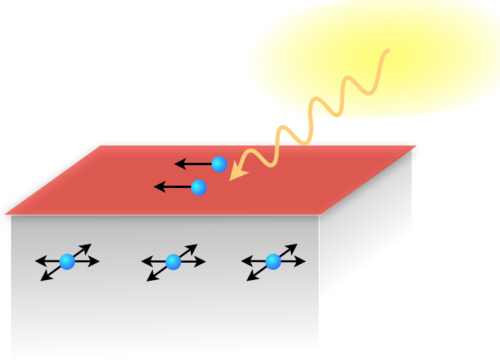Non-Equilibrium Effects
One effect in the field of strongly non-equilibrium systems that we study is the photogalvanic effect [1], which is the conversion of light into electrical dc current. Scientific progress in this field is on the top of the wish list with regard to todays major technological challenges. Materials that are able to efficiently rectify light into a net dc current are rare owing to the restrictive requirements of high light absorptivity and a high degree of inversion-symmetry-breaking polarization of electronic degrees of freedom. In our comprehensive study of the ballistic photogalvanic effect [1], we show that generic properties of topological-metal surfaces provide a particularly interesting platform for current rectification. Here the high absorptivity of far- and mid-infrared light due to topological band closings, present in the bulk, is combined with inversion-symmetry breaking of the surface, which allows for a photogalvanic effect in crystals that preserve inversion symmetry in the bulk. First experimental observations of surface-photogalvanic effects in centrosymmetric topological crystals are encouraging.
Looking ahead, this surface photogalvanic effect should become strongly enhanced once relaxation mechanisms are taken into account (disorder, phonons). We expect that the anomalous transport properties of topological states, which we previously explored in linear-response regime [2, 3, 4], will play a crucial role also in the strongly non-equilibrium setting.
[2] “Large contribution of Fermi arcs to the conductivity of topological metals”, M. Breitkreiz and P. W. Brouwer, Phys. Rev. Lett. 123, 066804 (2019).
[4] “Chiral Anomaly Trapped in Weyl Metals: Nonequilibrium Valley Polarization at Zero Magnetic Field”, P. M. Perez-Piskunow, N. Bovenzi, A. R. Akhmerov, and M. Breitkreiz, SciPost Physics 11, 046 (2021).
